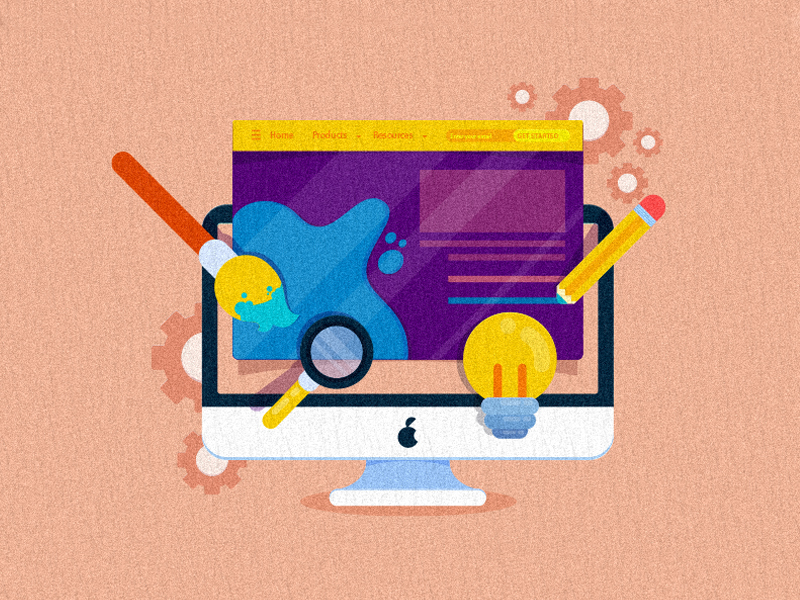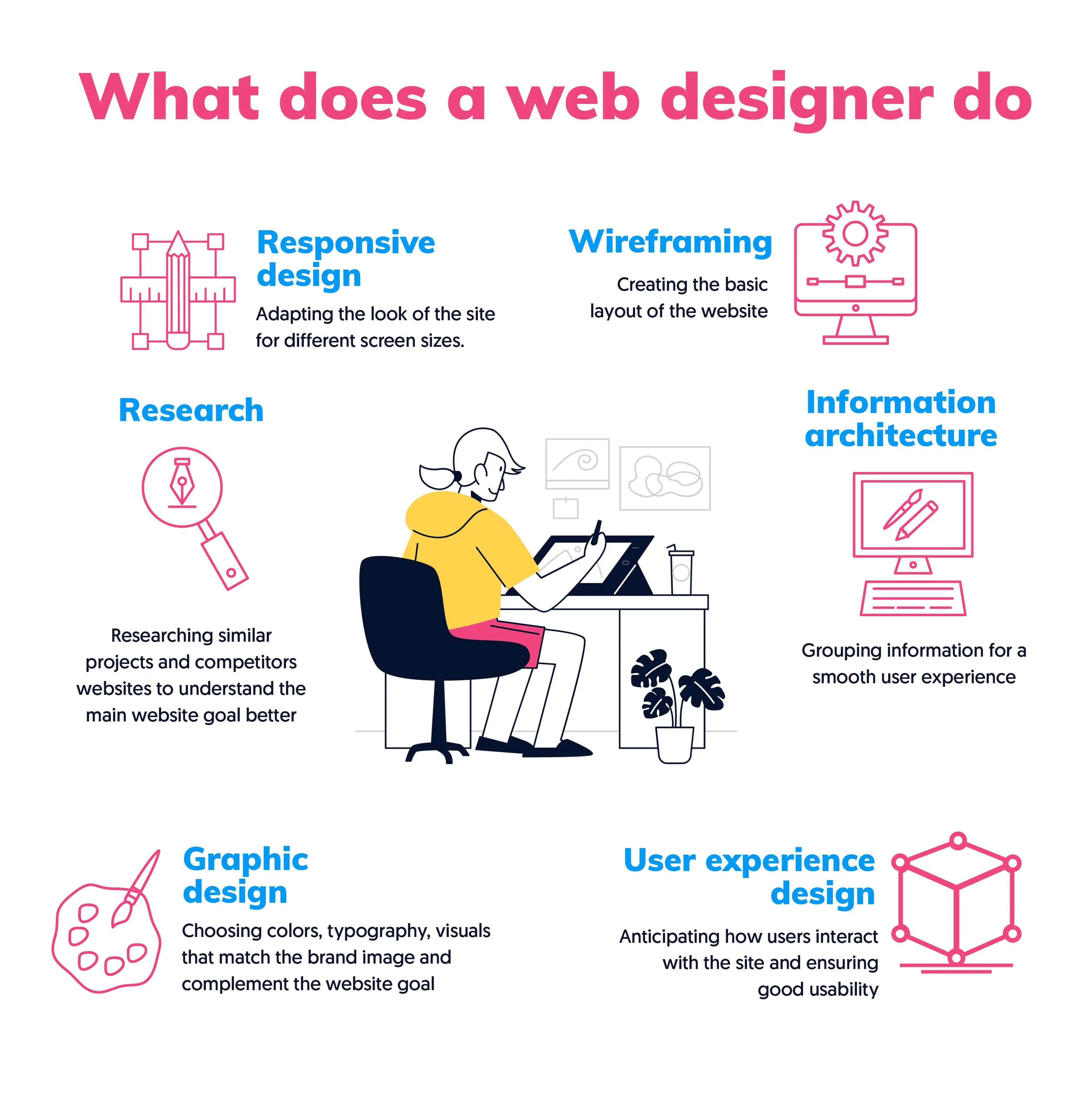Aligned Position Web Design: Perfectly Designed Websites to Capture Your Audience’s Attention
Aligned Position Web Design: Perfectly Designed Websites to Capture Your Audience’s Attention
Blog Article
The Ideal Sorts Of Website Design to Enhance Customer Experience and Engagement
In the ever-evolving landscape of electronic communication, the effectiveness of website design substantially influences individual experience and involvement. Numerous style methods, such as minimalist, receptive, and interactive formats, each offer one-of-a-kind advantages that can satisfy varied customer needs. Recognizing which sorts of website design best offer these goals can be critical for companies intending to boost client complete satisfaction and retention. The concern stays: which layout aspects absolutely reverberate with users and foster purposeful engagement? The expedition of these principles reveals essential insights that might redefine your method to Web style.
Minimal Web Style
As electronic landscapes come to be progressively messy, minimal website design has emerged as a powerful technique to boosting customer experience. This style approach prioritizes simpleness, concentrating on important elements while eliminating unneeded disturbances. By making use of sufficient white space, uncomplicated navigating, and a restricted color palette, minimalist design cultivates clearness and directs user focus to key web content.
The core concept of minimalist website design is to create a seamless communication for individuals. By decreasing cognitive load, customers can quickly comprehend info without really feeling overwhelmed. This direct technique not only improves use yet likewise encourages involvement, as visitors are most likely to explore a website that is simple and visually enticing to navigate.
In addition, minimalist layout usually highlights typography and images, using these components tactically to share messages successfully. This focus on necessary components can improve brand identity and produce a memorable individual experience. Fundamentally, minimalist website design is not simply a fad; it is a thoughtful approach that identifies the significance of user-centered layout. By stripping away extraneous aspects, designers can create a much more interesting, reliable, and pleasurable Web experience for all individuals.
Receptive Website Design
In today's varied electronic setting, receptive Web layout has become vital for producing a seamless individual experience throughout a wide variety of tools. As customers accessibility websites on smartphones, laptop computers, desktop computers, and tablets, the capacity of an internet site to adapt its format and material to various display dimensions and resolutions is crucial.
Responsive Web design employs adaptable grids, photos, and CSS media questions to ensure that Web material is offered efficiently, no matter the device used. This approach not just improves the visual appeal of a web site however also significantly boosts functionality. Individuals are most likely to engage with a website that uses a consistent experience, as it gets rid of the irritation of having to zoom in or scroll excessively.
Moreover, internet search engine, including Google, prioritize mobile-friendly sites in search rankings. By adopting responsive design, organizations can enhance their visibility and get to a broader audience. This approach likewise simplifies web site maintenance, as a solitary variation of the website can accommodate all gadgets, decreasing the demand for several variations. In summary, receptive website design is a basic technique that improves customer experience, engagement, and total complete satisfaction.
Interactive Web Design
Receptive website design prepares for enhancing individual experience, yet interactive Web design takes this an action even more by engaging customers in an extra dynamic way - Aligned Position Web Design. By including elements such as animations, clickable models, and real-time responses, interactive Web design captivates customers, drawing them into a richer browsing experience
This method not just cultivates involvement but likewise motivates users to check out material proactively as opposed to passively consuming it. Techniques such as gamification, where individuals earn rewards for completing tasks, can substantially boost the time invested in a website and boost total complete satisfaction. Interactive attributes can streamline intricate info, making it a lot more pleasurable and absorbable.

Incorporating interactive style components can additionally lead to higher conversion prices, as users are more probable to engage with a website that proactively entails them. Aligned Position Web Design. Eventually, interactive Web design transforms customer experiences right into memorable journeys, making certain that visitors return time and once again
Flat Style
Defined by its minimalistic approach, level style stresses simpleness and capability, removing away unneeded components and concentrating on important functions. This style approach prioritizes usability, making sure that individuals can browse user interfaces effortlessly and effectiveness. By utilizing a tidy visual, level style gets rid of the clutter typically discovered in much more ornate styles, thereby boosting customer concentrate on material and performance.
The hallmark of level layout hinges on its use strong colors, simple typography, and geometric shapes. These elements add to an aesthetically attractive interface that is both modern and friendly. Additionally, level style fosters a sense of quality, permitting users to discern important activities and info without interruption.
Moreover, flat style is specifically effective in receptive Web design, as its simplicity equates well across different gadgets and display sizes. By focusing company website on necessary features, level style not just satisfies customer requirements yet also encourages seamless communication, making it a vital element of reliable Web design techniques.
Flexible Website Design
Flexible website useful reference design tailors the user experience by creating numerous dealt with layouts tailored to different screen sizes and gadgets. Unlike receptive layout, which fluidly readjusts a solitary format, flexible design employs distinct designs for specific breakpoints, making sure optimal discussion on different systems. This strategy permits developers to concentrate on the one-of-a-kind features of each tool, boosting use by supplying specifically what customers require based upon their context.
Among the key benefits of flexible Web style is its capability to optimize load times and performance. By serving tailored content and photos that fit the customer's gadget, web sites can minimize information use and enhance loading speeds. This is particularly advantageous for users with slower links or limited information strategies.

Additionally, adaptive layout assists in a much more regular and controlled branding experience. Considering that developers develop several formats, they can guarantee that the aesthetic elements straighten with the brand name's identification across different platforms - Aligned Position Web Design. This causes a natural individual experience, boosting engagement and promoting individual retention
Verdict
To conclude, the combination of minimal, receptive, and interactive Web design principles dramatically enhances user experience and interaction. Minimal design fosters clearness and emphasis, while receptive layout makes certain adaptability throughout different gadgets, promoting access. reference Interactive design mesmerizes users with vibrant components, urging expedition and customization. Jointly, these layout comes close to add to the creation of user-friendly environments that not only improve complete satisfaction but also drive greater conversion prices, emphasizing their critical importance in contemporary website design approaches.

Minimalist design promotes quality and emphasis, while responsive design guarantees versatility across different gadgets, promoting availability. Collectively, these style comes close to add to the development of easy to use atmospheres that not just enhance fulfillment yet additionally drive greater conversion prices, highlighting their essential relevance in modern Web style strategies.
Report this page